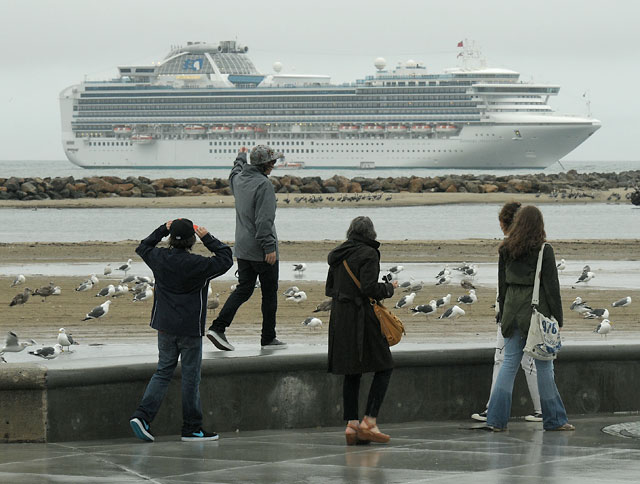22 Cruise Ships Set Course for Santa Barbara
Major Uptick from Past Years; Environmental Group Eyeing Potential Impacts

It’s no surprise that Santa Barbara — with its historic sights, pristine beaches, and gorgeous weather — is a popular destination for travelers worldwide. But this summer many more of those annual tourists will arrive, not by plane but by boat, as 22 cruise ships are expected to dock just off the coast in the coming months. In years past, according to the city’s Waterfront Administration, an average of six to seven cruise ships motored through Santa Barbara waters, so this dramatic uptick is sure to catch the attention of not only area business owners but also environmental groups.
With visits expected from Princess Cruises, Celebrity Cruises, and Crystal Cruises, each ship will dock for one to three days while the majority of their 3,000 or so passengers come ashore to explore, buy, and relax. The cruise line industry estimates that couples will spend around $200 during their stay in Santa Barbara, and the Waterfront Administration said the visits let the city test “the ‘return visit’ notion, where people who come ashore during a cruise ship stop are attracted enough to the community to come back on their own.”
The significant influx of cruise ship visits expected in 2013 — particularly during the months of April, May, and October — is due in part to Santa Barbara’s participation at annual Seatrade conventions and its membership in the Cruise the West association. Additionally, safety issues at Mexican and Central American ports are causing cruise lines to look for new places to bring their passengers, noted the Waterfront Administration.
On top of the positive economic impact the fleet may have on the South Coast, activists worry there is also the chance it could generate negative environmental effects within the Santa Barbara Channel. Based on information gathered by Oceana, an international organization that advocates for ocean conservation, a single cruise ship can generate up to 168,000 gallons of sewage per day and uses the same amount of fuel as 12,000 vehicles. Current regulations do place limits on where and how cruise ships are allowed to dump their sewage — for instance, they can’t discharge waste within three miles of the coastline — but monitoring is minimal, and ships are not required to track or report their discharges.
With the help of environmental watchdogs like Santa Barbara’s Channelkeeper, such regulatory efforts have grown more teeth as the nonprofit works with city officials to more effectively police activities taking place in the waters around these “floating cities.” In addition, said a Waterfront Administration representative, S.B. “requires that the ship’s captain sign an Environmental Declaration promising not to dump any gray water or sewage within 12 miles of the Santa Barbara coast. They must also be underway and making way when they discharge.”
To police these mandates, Channelkeeper volunteers use small boats to collect water samples from around the cruise ships in order to test for any pollutants. In recent years they have come up negative for contaminants. The organization is now also using airplanes to fly over the Channel as ships come and go, taking photos to see if there are any suspicious trails behind the big boats. But even with these precautions in place, Channelkeeper remains concerned about the impact so many cruise ships may have on the marine life in the channel and is seeking volunteers to assist in its oversight efforts. The Waterfront Administration encourages such programs “as long as they respect the vessel’s 300-foot security zone.”



